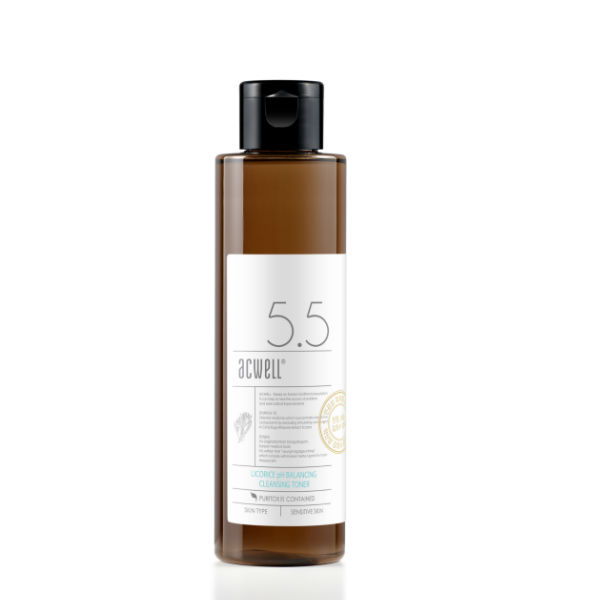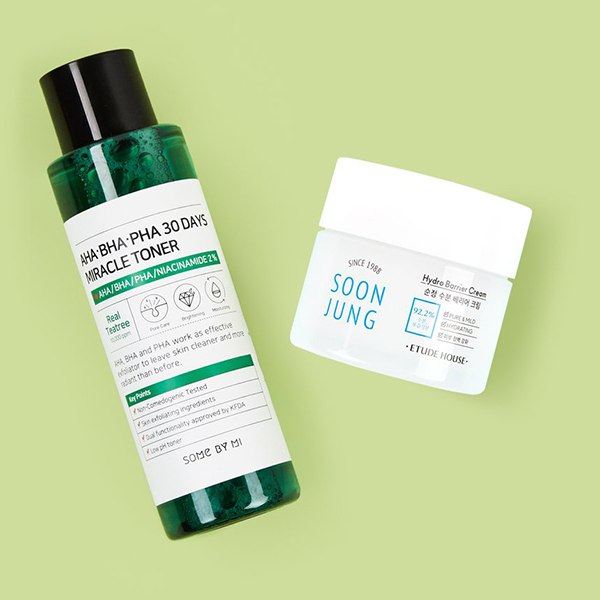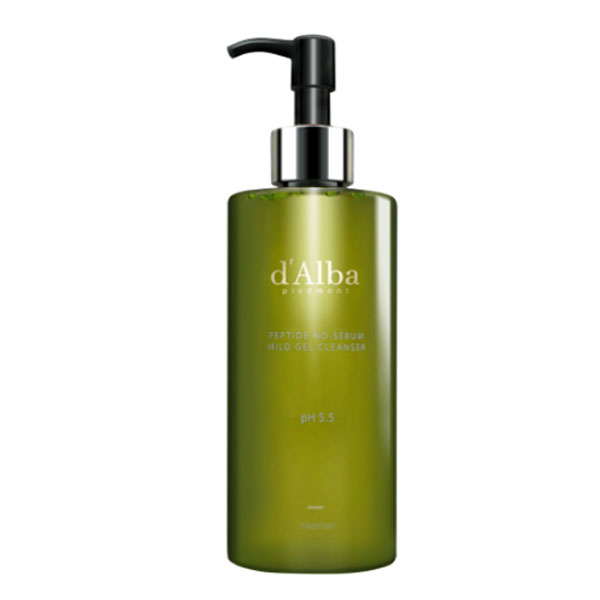The pH of skin care products is an important factor that affects how your skin looks and feel. Read on to discover why.
We get a lot of questions from readers inquiring about the pH levels of different products and how pH in general can affect skin. The topic can be confusing, but here, we’re breaking it all down.
What is pH?
pH is a scale of measure from 1 to 14 that tells you how acidic a product is. A neutral pH is 7. Anything lower than 7 is considered to be acidic while anything higher is considered to be alkaline or basic. Skin is naturally more on the acidic side with a pH of 4.2 to 5.6, and remains at this pH to defend itself from bad bacteria, which can multiply in more alkaline conditions.
Your skin is also naturally protected by a thin layer made of ceramides, fatty acids, and lipids called the acid mantle. This mantle protects the skin from any possible irritants, like acne-causing bacteria and transepidermal water loss (AKA one of the culprits behind dry skin). It’s important to keep this mantle balanced so that it can continue to fight off bad bacteria for you. When it’s thrown off, you essentially leave your skin unprotected, which is why it’s important to keep the pH of your products in mind.
What affects the pH of skin?
“Soaps, moisturizers, and toners can all affect the skin. It is also important to know whether there are certain ingredients in your products that can affect pH, like alcohols,” says Long Island, New York-based dermatologist Kavita Mariwalla.
The good news is that because cosmetic chemists understand how pH affects skin, many products are now formulated with this in mind. This is especially true of Korean beauty products since in K-beauty, hydrating and non-irritating are the names of the game.
Beyond the formulation, outside factors can also affect the pH of your skin, such as simply washing your face with water. H20 can actually raise your skin’s pH. The longer your skin’s pH is left affected, the longer your skin is prone to exposure to environmental stressors and the growth of bad bacteria.
Is it okay to use higher pH cleansers?
There are some product categories, like cleansers, that are sometimes formulated at higher pH levels. At this point, you may be wondering: Does this make them bad to use? The answer is, not necessarily. It really depends on your skin type and the surfactants (the ingredients that make a cleanser foam) being used.
The number one way to tell if your acid mantle is being stripped by your cleanser is to wash your face and see if it feels tight and/or dry after use. This is a clear indicator that your acid mantle has been affected. That squeaky clean feel is not what you should be searching for. You should seek cleansers that leave your skin feeling clean but also hydrated.
While a higher pH does have the ability to cause skin irritations, the biggest culprit here is usually the inclusion of sodium lauryl sulfate in the formula. This surfactant can be damaging to the skin. It has been known to cause redness, irritation, dryness and even skin conditions like atopic dermatitis because it throws off the balance of your acid mantle. Usually, higher pH cleansers use this surfactant which is why you’re told to avoid them and instead reach for lower pH ones, but those can be just as damaging if sodium lauryl sulfate is in the formula.
One cleanser we love that’s free of SLS and has a pH level of 5.5 is the d’Alba Piedmont Peptide No-Sebum Mild Gel Cleanser.
Bottom line: If your skin feels nourished after using your cleanser, it’s likely okay to keep using it. Just remember to always use a pH balancing toner, like the Acwell Licorie pH Balancing Cleansing Toner afterwards, which will help to return your skin back to its normal pH levels.
What about low pH acids and treatments?
Some of our favorite skin turnover-boosting ingredients, like AHAs, BHAs, vitamin C, and retinoids, are all on the other end of the spectrum, i.e. very acidic, and can thus strip the skin and cause irritation. That’s one of the reasons why products that include them should be used correctly (more on that here), and should always be followed by nourishing and moisturizing products to help restore the skin barrier.
For example, we recommend pairing the Some By Mi AHA-BHA-PHA 30Days Miracle Toner, which contains three types of acids, with the Etude House SoonJung Hydro Barrier Cream, a formula packed with barrier-repairing ingredients. Find them both in this set.







